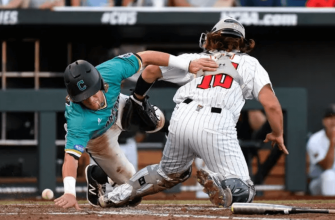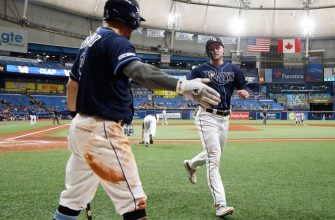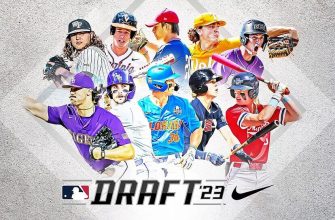High school baseball in the United States is governed by the National Federation of State High School Associations (NFHS). The NFHS Baseball Rules Committee creates the official rules that regulate play. These standard rules help ensure fairness and consistency across high school baseball games nationwide.
The NFHS rule book contains regulations for game length, field specifications, equipment, uniforms, gameplay, umpiring, and sportsmanship. While most rules are consistent countrywide, some states or local districts implement modifications. Generally, the fundamentals of baseball remain the same from Little League through the major leagues, with incremental rule adjustments as competition increases. High school baseball has its own unique set of regulations tailored to teen athletes.
Regulation Game Length

Most high school baseball games are 7 innings in regulation length according to the National Federation of State High School Associations (NFHS) rules. This is shorter than the typical 9 inning regulation length in professional and collegiate leagues.
The 7 inning regulation was established as the standard game length for high school baseball by the NFHS. State athletic associations adopted the NFHS rules, so the 7 inning format is consistent across most states.
There are some exceptions, with certain states or leagues experimenting with shorter 5 or 6 inning games. But the vast majority adhere to the standard 7 innings for a full regulation game.
Extra Innings
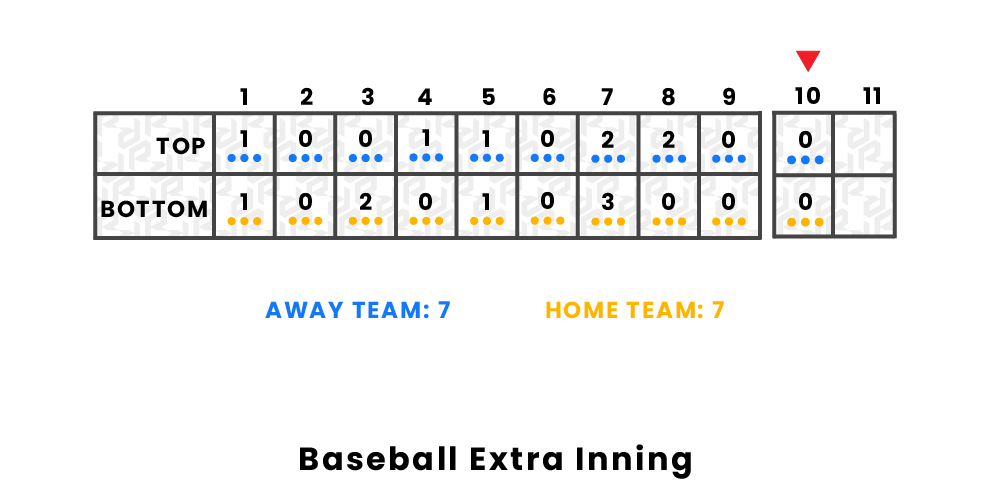
If the score is tied at the end of regulation (7 innings), the game will continue into extra innings until a winner is decided. There is no limit to the number of extra innings that can be played in high school baseball. Extra innings will continue until one team has the lead at the end of a completed inning.
Both teams get their turn to bat in each extra inning. The game essentially restarts, with the batting order resetting and no runners automatically placed on base. The traditional baseball rules apply during extra innings. If the game remains tied after multiple extra innings, play will continue until a winner emerges. Extra inning games can extend well beyond 9 innings if neither team can manage to score.
Famous examples include a 25 inning high school game in Texas in 2009 and a 30 inning game between two Illinois schools in 2015.
Mercy Rules
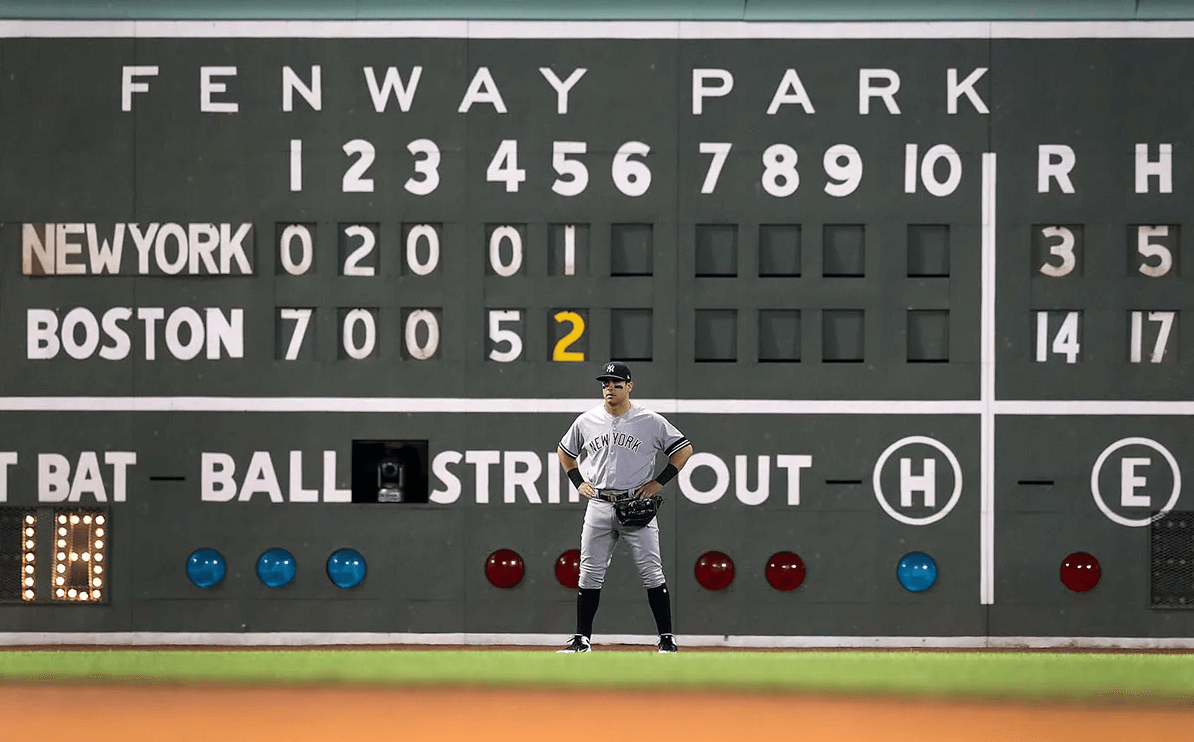
Most states have mercy rules in place to shorten games when one team has a large lead. This prevents blowouts from dragging on. According to the HIGH SCHOOL BASEBALL RULES – Section 1, the California Athletic Association has a mercy rule where a game will end any time after 3 innings, or after 2 1⁄2 innings if a team is ahead by 20 or more runs.
Sources note that a common mercy rule is ending the game if one team is up by 10 or more runs after the 5th inning. Mercy rules help avoid running up the score and lessen the chance of injuries when the outcome is no longer in doubt. Specific mercy rule details can vary by state.
Weather Shortened Games
High school baseball games can be ended early due to inclement weather before becoming an official game. According to the National Federation of State High School Associations (NFHS), for a game to be considered official and count in standings, at least 4.5 innings need to be played if the home team is winning or 5 full innings if the visiting team is winning. This minimum number of innings constitutes an official game.
If weather forces a game to be called prior to the minimum innings being played, the game is considered suspended. The game can be resumed at a later date and picked up where it left off. If the game is unable to be resumed, it is declared “no game” and basically doesn’t count. However, individual and team statistics up until the point of suspension still stand.
So in summary, a high school baseball game needs at least 4.5 innings if home team ahead or 5 innings if visitor ahead to be considered official. If weather ends the game before that point, the game is suspended and can be resumed from that point. If it can’t be resumed, the game is wiped from the records.
Tournament Games

Tournament games often have different regulations for game length compared to regulation league games. According to the rules from Perfect Game USA tournaments, all pool play tournament games have a strict 2 hour time limit, with no new inning able to start after 2 hours of play. Other tournaments like those run by Illinois Baseball Tournaments also enforce a time limit of 1 hour and 45 minutes per game.
Time limits help keep tournament scheduling on track during pool play when many games need to be completed in a short period. However, elimination bracket games may not have a time limit and instead play a full 7 inning regulation game. Time limits add a unique strategic element to pool play tournament games, as the clock becomes a factor along with the score. Teams must balance taking time to score runs while also playing quick defense to fit 7 innings into the shortened time frame.
State Specific Rules
There are some variations in high school baseball inning rules from state to state. According to the NFHS, most states follow the national Federation of State High School Associations (NFHS) rules for baseball, which specify a regulation game as 7 innings.
However, some states have exceptions or modifications:
-
In Texas, high school baseball games are played according to University Interscholastic League rules, which state a regulation game lasts 7 innings.
-
In South Dakota, regular season games last 7 innings but state playoff games go 9 innings.
-
Illinois has introduced a pitch count limit of 105 pitches per game.
-
New Jersey has introduced a 120 pitch per game limit as well as required rest periods for high school pitchers.
-
Connecticut rules allow for time limits on games in addition to the inning limits.
So while the 7 inning regulation length is standard in most states, it’s important to check state athletic association rules for any modifications or exceptions that may apply. Pitch counts and other pitching limitations are a common area of variation.
Pitch Count Limits
Pitch count limits regulate the number of pitches a high school pitcher can throw in a game or over multiple days. This is done to protect young pitchers from overuse injuries like elbow and shoulder problems.
Most states follow pitch count guidelines from the National Federation of State High School Associations (NFHS).
The NFHS pitch count chart recommends limits such as:
- 105 pitches per day
- 66 pitches require 1 day of rest
- 51 pitches require 2 days of rest
- 36 pitches require 3 days of rest
Some states like California and Texas have their own specific pitch count rules:
- California limits pitchers to 30 pitches per day
- Texas limits range from 0 to 125 pitches depending on grade level
Tournament and state championship games often have exceptions to limits, allowing teams to use pitchers more. But for regular season play, strict pitch counts protect young arms.
Doubleheaders
According to the National Federation of State High School Associations (NFHS), doubleheaders in high school baseball consist of two seven-inning games. This rule is outlined in the NFHS Baseball Rules Book, which states “Two seven-inning games shall constitute a doubleheader”.
Some key points on doubleheaders:
- Each game is seven innings, even if it goes to extra innings.
- Pitch counts and rest requirements still apply to each game.
- Doubleheaders are often played to save costs or due to weather postponements.
- In some states, junior varsity teams will play a shorter 5 inning doubleheader.
- Doubleheaders can be scheduled on the same day or across two days.
- Doubleheader games may have shorter breaks between them.
So in summary, in high school baseball, a doubleheader consists of two separate seven inning games, with normal rules applying to each individual game.
Conclusion
In high school baseball, regulation games typically last 7 innings or roughly 2 hours. If the game is tied, teams will continue to play extra innings until there is a winner. However, the game can end early if one team has an overwhelming lead due to mercy rules or if weather forces the game to be called.
Tournament and championship games often have no limitations on the number of extra innings that can be played to determine a winner. While regular season high school games have limits on the number of pitches a player can throw to prevent overuse injuries. Teams will sometimes play doubleheaders with two shorter 5-7 inning games scheduled on the same day.
While most states follow the national federation baseball rules, some states like Massachusetts modify game length, mercy rules, and pitch limits based on the level of high school baseball. The number of innings ultimately comes down to the regulations for that league and level of play.


